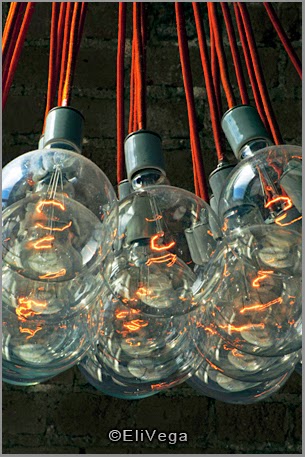THE ROLE OF INTUITION IN PHOTOGRAPHY
I spend a lot more time in my upcoming book on this
one topic. Some of us have that internal sense of
intuition, that internal tug that tells us there is something over there, or
over there. If that's not you, then think about this--next time
you're out shooting, stop, just stop. Look around you slowly, left, right,
around your feet, above your head. There is usually something there. When you
stop, and use your imagination, you will not only look, but you just might
see some hidden gems you hadn't seen before.
What do these three have in common: A flower arrangement, Taco Bell, and light bulbs? They were fodder for my right brain photography, after I followed my intuition that whispered, "You know, there might be something there. can you find it?"
What do these three have in common: A flower arrangement, Taco Bell, and light bulbs? They were fodder for my right brain photography, after I followed my intuition that whispered, "You know, there might be something there. can you find it?"
This is part of my right brain photography approach to photography. Let's start with this first of three scenarios. I was delivering a flower arrangement to a seriously ailing friend who was in an assisted living community. As I grabbed the arrangement from the backseat and started walking to the front door, my intuition kicked in and made me pause. I looked at the arrangement in my hands and realized I was holding on to a piece of art. I placed the arrangement on the parking lot, close to my car. I grabbed my photo gear and took out one of the props I carry with me-- a piece of black art board, which I used as my backdrop to separate this one flower from the others in the bouquet. The rest came easy.
I was walking along Pearl Street in Boulder, Colorado. In an old red brick building, I found a unique cafe/bar. There are a lot of cool, old, iconic buildings on Pearl Street. My intuition led me up the steps into the eclectic cafe and bar. It didn't take long to spot my photo trophy. I quickly asked one of the workers if it was okay for me to "take some pictures." I never "take" pictures, but say that to use the more commonly understood vernacular. After I got approval, I went to work, and created this. I was looking almost straight up to get this composition.
I got up early one morning while on a photo trip in Arkansas. In the small town of Russelville, I saw a Taco Bell as I drove down a narrow street. My intuition kept me from just driving by. Although it was just a Taco Bell, my intuition guided me to take a closer look. I saw something on one of the exterior walls, but didn't like the way the shadows looked that early in the morning. I decided to keep shooting around town for another two hours, hoping that when I returned, the shadows would look better. I'm glad I went back.
Intuition, if we listen to it, can guide us to spots, places, locations that, on the surface, may not even seem worth looking at---like a Taco Bell. Listen to it. If you don't think you've got intuition, do you ever get a gut feeling? Does your head suddenly turn to your right or left when you're out shooting? You might not know why, but follow those instincts--they're telling you something. Stop. Listen. Look. See. You might surprise yourself.



























